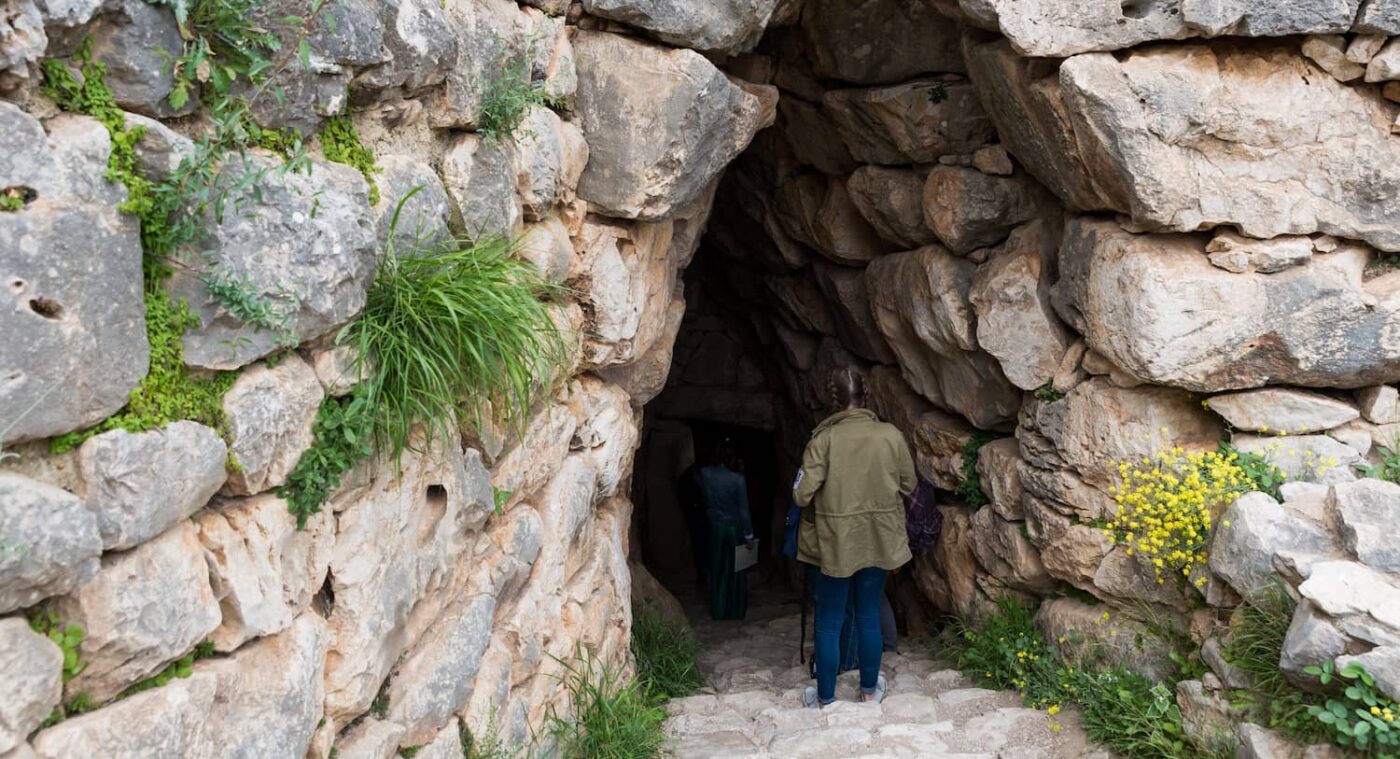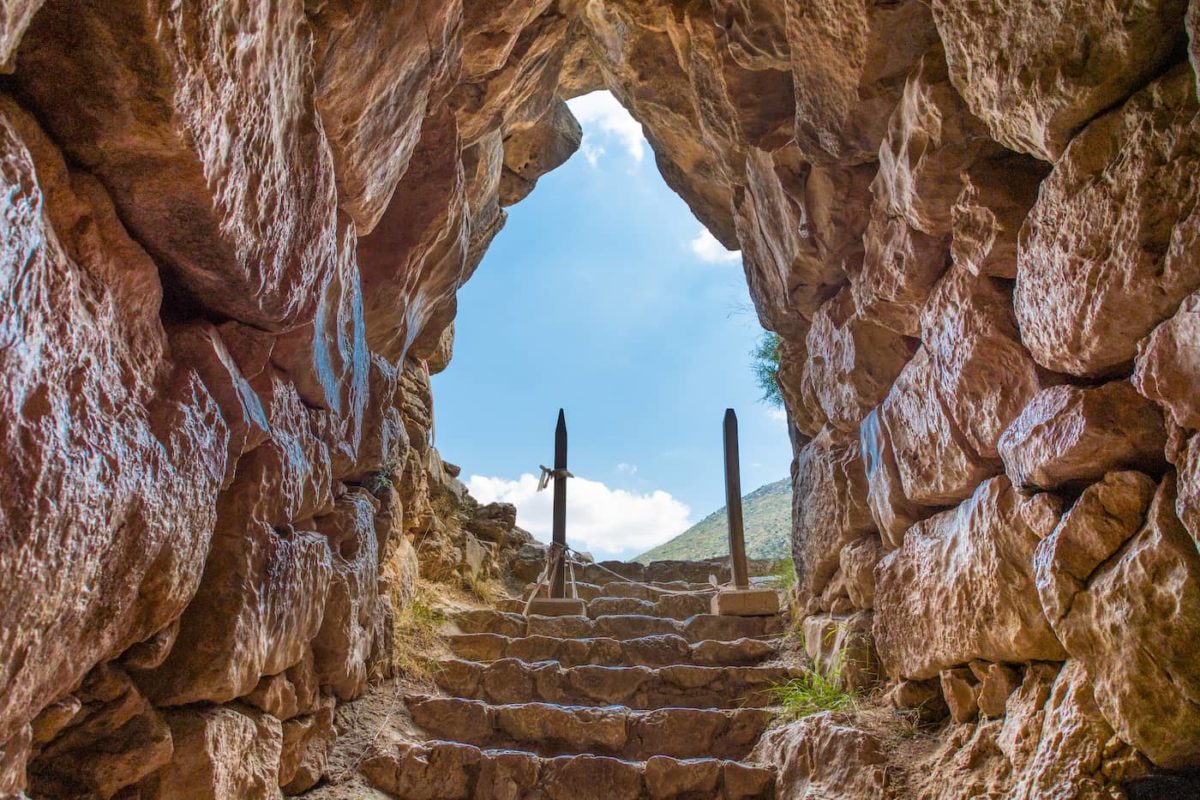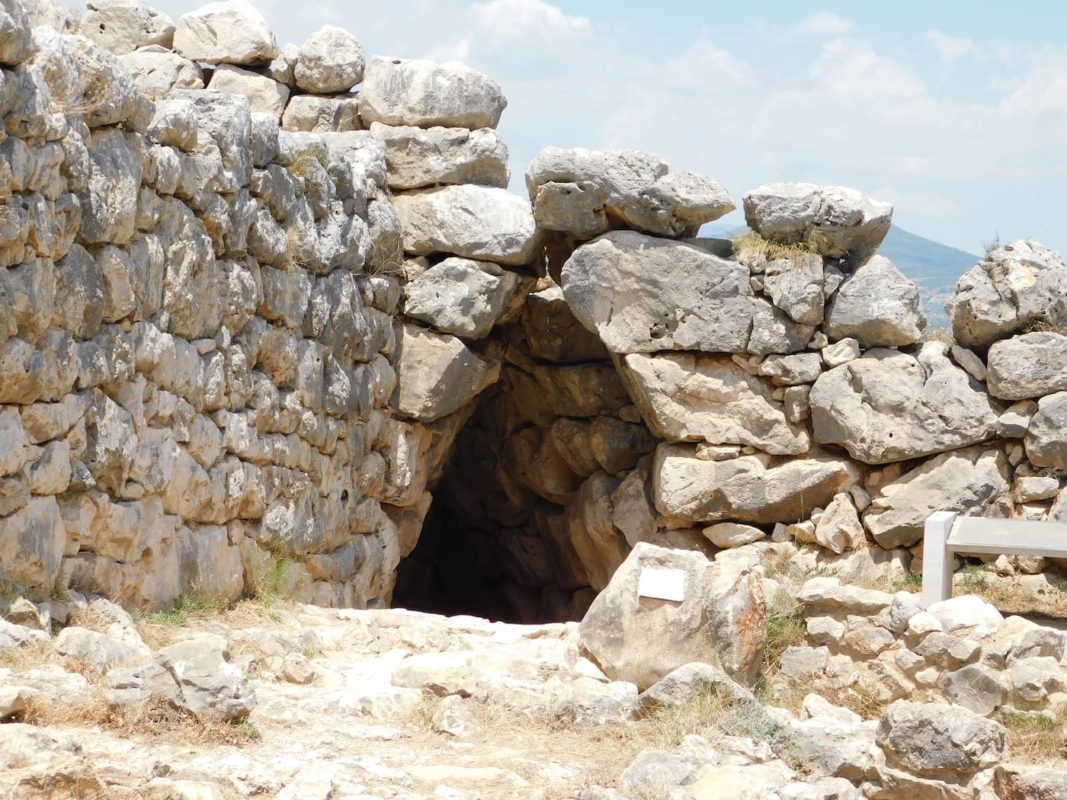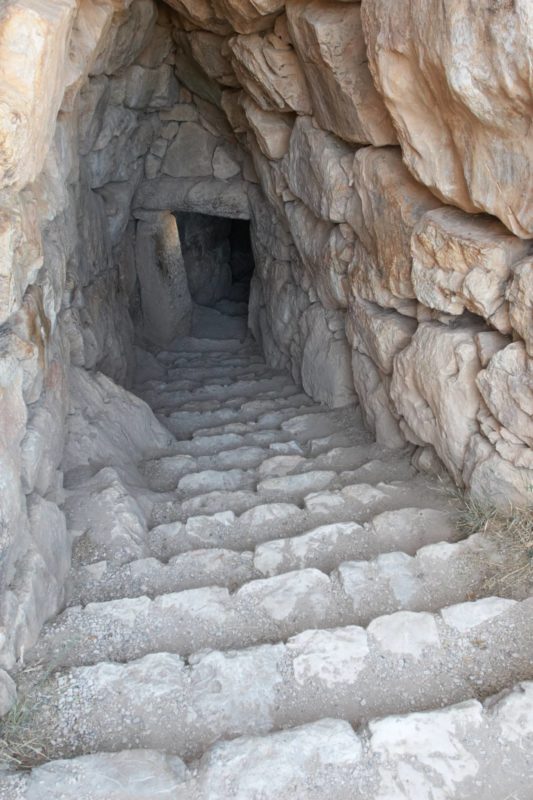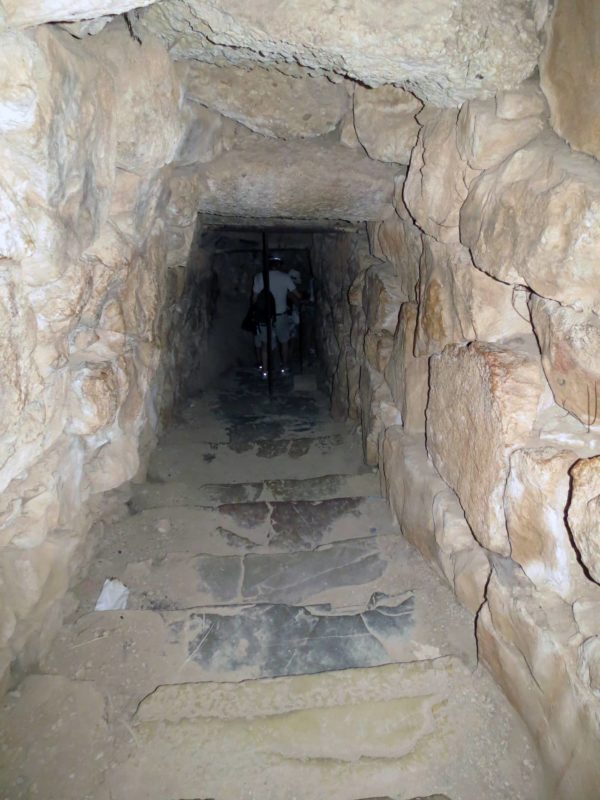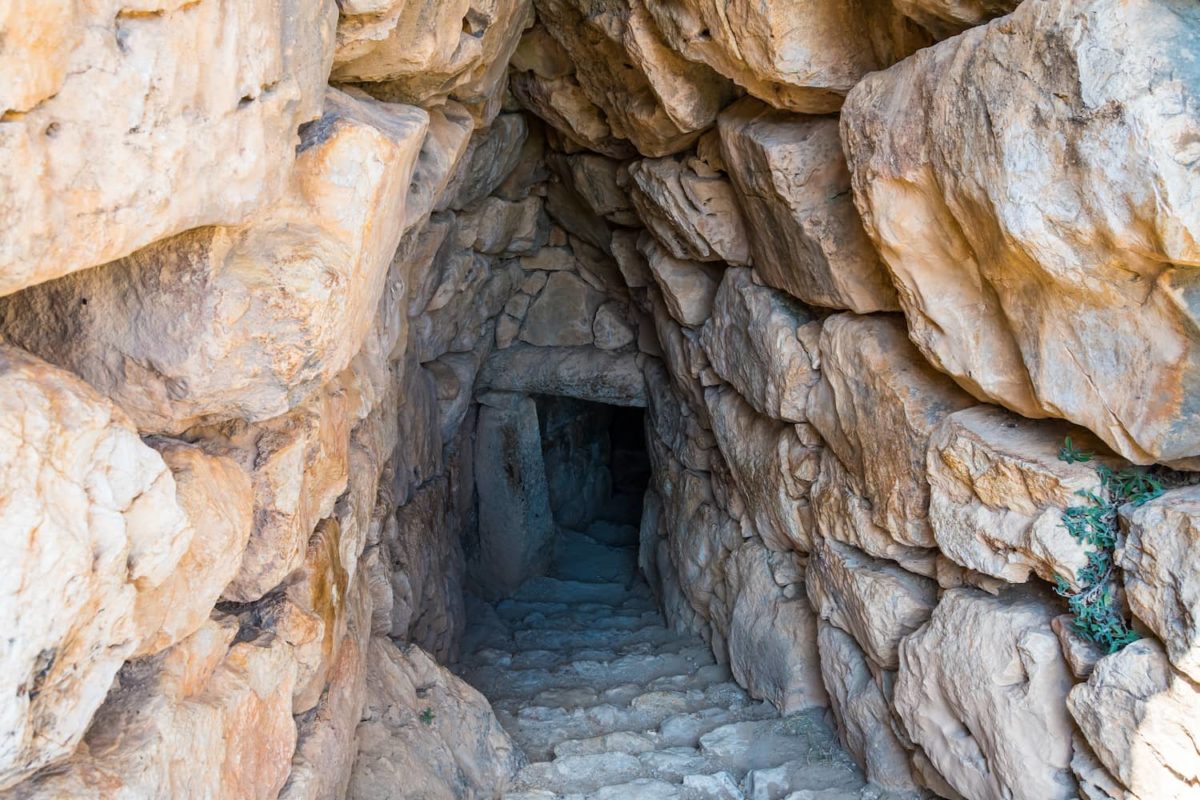Subterranean Reservoir
The subterranean reservoir is located inside the walls of Mycenae, in the northeast corner and towards the northern Cyclopean Masonry. It dates back to the late 13th c. BC, around the same period that the last gradual extension of the Mycenaean enclosure took place in order to include it.
The subterranean reservoir was built inside the walls of the Mycenaean Acropolis so as to supply water to the inhabitants in case of siege. The water was provided, mainly, by a source of vital importance, named “Persia”, which since the prehistoric times until the present day springs and even supplies the contemporary settlement with water.
Nowadays, scholars place it precisely at a distance of 360 m. away from the Acropolis. This position is advantageous at 13 m. higher than the top of the Acropolis and it is generally considered it the main aqueduct of the city since the Mycenean times.
The Mycenaeans were technically experienced enough to be able to transport water through pipes to the hill of the Acropolis. The problem was solved when an opening was found on the natural rock, which was used in order to reach the reservoir that was built outside the walls. The plan that was conceived and implemented by the Mycenaean craftsmen, highlights the mechanical expertise of the subterranean reservoir, which can be compared with contemporary urban water-supply systems 33 centuries later.
The reservoir is accessible through a ladder of 3 levels that depend on the depth and direction.
The first descending staircase, from which only 16 steps survive, leads to a cyclopean style gate. The tubular stepped descent penetrates obliquely to the wall at its entire thickness and continues underground until it reaches a covered four-sided wide landing – first stop – from where it turns west. The second staircase starts from a wide landing and leads to another – second stop – with 20 steps, changing direction to the east.
After the last turn, the third set of stairs with a steep slope covers a distance of 12 meters with the remaining 54 steps. The last ladder was intended to increase the capacity of the reservoir. This is because it, the subterranean reservoir and the well had a double layer of hydraulic plaster.
The vaulted reservoir, 5 meters deep, on top of its roof contains a vertical well with sparsely placed stones acting as filters. This is where the underground pipeline reached from the source. This is how a practical solution was found regarding the water supply issue to the Acropolis of Mycenae.
The pottery fragments that were found around the wall and from the underground reservoir provide evidence that it dates at the end of Late Helladic III B (1300 – 1210 BC) and Late Helladic III C (1210 -1160). Similar constructions can be also found in the Acropolis of Athens and Tiryns.
The reinforcement of the underground aqueducts is almost simultaneous in the palace centers.
The monument is accessible to the visitor with the help of a lens.

